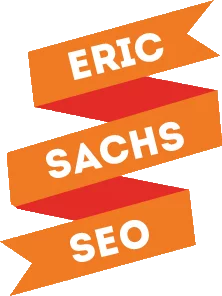Until recently, searches for local businesses needed to have a business name and location included, which isn’t very helpful if you don’t know the exact business name. If you misspelled the name or completely butchered it, it was likely to not show up at all. This led to a lot of frustration for users that Google has finally addressed. Earlier in the year, Google announced some changes to searches. In November, Google rolled out a tweak for local searches and we think it’s a big relief for many.
November 2019 Local Search Update
It took the entire month to roll out the new update and so far, it’s working well. Many contribute it to the neural matching, but what is it? Google calls it a super-synonym system, we call it smart. Neural matching gives Google the chance to understand the meaning behind searches and match them to local businesses that are most relevant to the search. This gives some businesses a chance to be found when they may not have shown up previously. This also means that some businesses that dominated a keyword will show up less.
Artificial Intelligence Behind The Searches
Artificial Intelligence (AI) has been used for a lot of different things and Google has been in the game for a while. Google Analytics is a perfect example of AI and its abilities. It knows a person’s browser, location, what websites they visit the most, and how much time is spent on those websites. Google Maps is also using AI to help with travel. It gives you an ETA, alerts you of detours, and traffic jams. Maps even will give you the option of a new route to compensate for missing a turn or needing to avoid a traffic jam. The next step was to use AI in searches to simplify and streamline the user’s experience just as Google has always strived to do.
No More Multiple Listings For One Site
How many of us have typed in our search and seen six listings for Pinterest in the results? Or maybe we want to shop and we get a whole page of Amazon links. Annoying, isn’t it? Well, that was one of the reasons why the November 2019 Local Search Update was implemented. Many businesses weren’t getting the chance to be seen because other websites took up most of the first page. The likelihood of people making it to the second page isn’t very high. Users also don’t want to see just one business listed, they want the smorgasbord. Trust us, if they wanted to shop at Walmart or visit Pinterest, they would’ve gone straight to that site instead of Google. While the businesses that appear the most may not enjoy the shift, they will still be seen after the local businesses. We live in a society that is striving to go back to supporting local businesses. Google jumped on board and seems to support the very idea.
The Algorithm Effect
Many have wondered how this new update affects our usual searches. We all know that Google caters to the individual user. Searches are based on past searches and they show you what they think the user wants to see. But the update is now promoting more localized businesses, so how does that affect your future searches? Google says that searches will shift a bit but only to match the user’s new activity.
When these searches now show new information they haven’t seen before, they shift the algorithm when they investigate new pages. Let’s say you are searching for an old cookie recipe that your Grandma used to make. While a recipe site will appear, other local businesses relating to cookies and baking will appear. If you fall down the rabbit hole of looking at baking supplies from a store and the new bakery opening down the street, your algorithm will shift a bit. The more this happens with your searches, the more your algorithms shift to fit you as a user. So what does this mean for a business who is no longer appearing as much in searches? It means engagement could slow down or be lost.
Good For The User, Bad For Business?
Google has always been about the user and not so much the business. While the user will now see businesses they hadn’t seen before, this means that some businesses won’t be seen. So what does a business do if suddenly they see a drop in numbers? The same as they always have. They adjust their social media interactions and tweak their marketing plans. They look for new and innovative ways to bring people to their sites.
It isn’t a bad thing for business when Google rolls out these updates. The users have been asking for this change for a while and Google listened. It can be frustrating for the business but it’s a situation you have to roll with. It helps to also re-think who you are interacting with. Maybe you need to refocus and market more towards your local audience. While Google is streamlining the experience for the user, it is also working to get the best matches for business as well. If you don’t want to lose that fabulous market you have built on the other side of the world, you can still work to keep them on board.
These updates are barely a month old and there will be a lot to witness over time. So far, the changes have had a positive response from the users. As algorithms shift and AI gets smarter, that will be when we really see how well the updates do. We believe it will make business with users better. Change is always a frustrating hurdle for businesses but fortunately, Google has been talking about this one a while. Hopefully, businesses have made flexible plans to keep their engagement and continue to grow.
